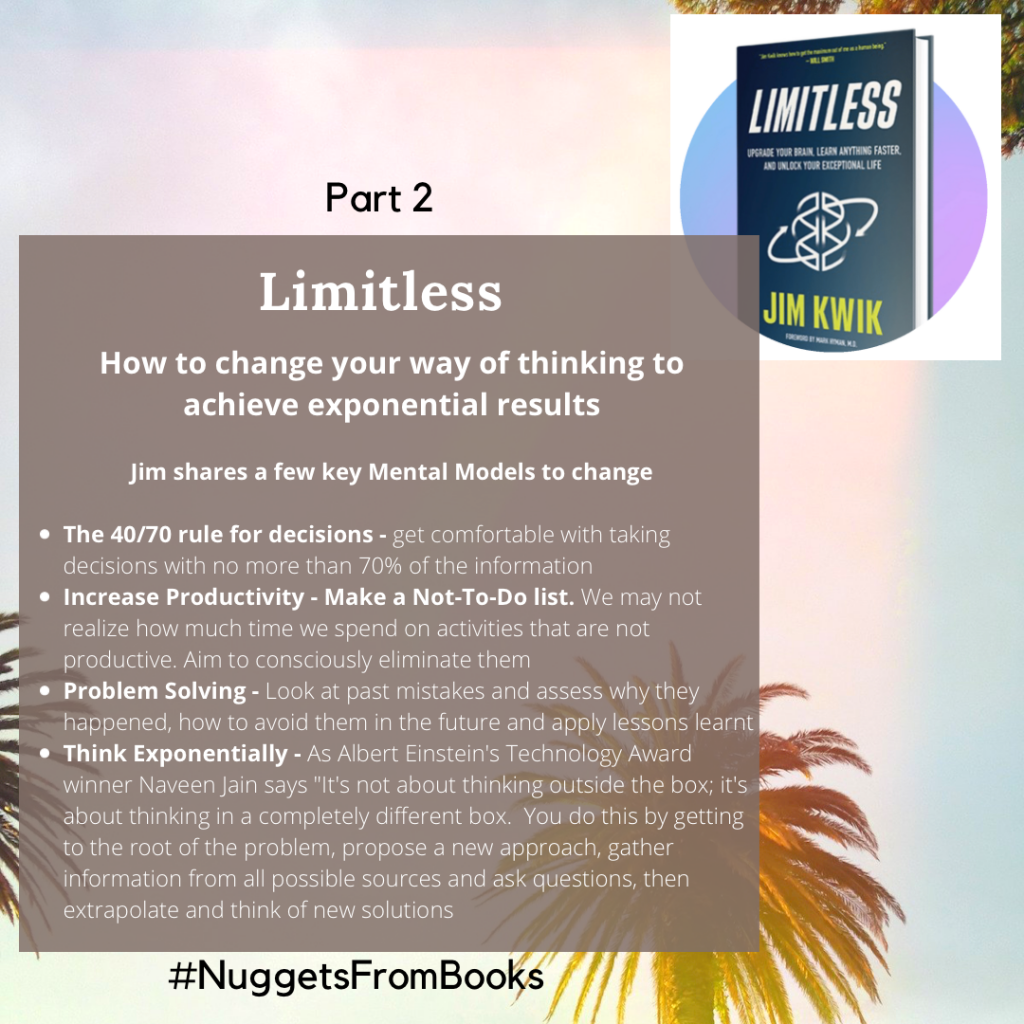As I said in the previous post, there are so many nuggets in the book Limitless from Jim Qwik that one byte size blog cannot do justice to it. Here are a few pointers to change our thinking exponentially.
- The 40/70 Rule of Decision Making – Rather than waiting to get as much information as we can before making a decision, here’s the approach Colin Powell, former US Secretary of State used. According to him, you should never make a decision with less than 40% of the information you are likely to get and gather no more than 70% of the information.
- Increase your Productivity – Create a Not-To-Do List – This one is interesting and at first, rather counter-intuitive. Shouldn’t we be getting more organized by listing things we should be doing? When I thought about it I realized I can actually gain back many hours lost in unproductive activities throughout the day if I consciously decide not to do them. For example, watching TV – specially season after season of endless shows on Netflix! I managed to increase the time I spend reading (and speed reading) books.
- Problem Solving – Study Your Errors – We don’t often spend the time to truly reflect on what did not go well in life. It is a worthwhile exercise to reflect on why the problem happened, what worked and what didn’t, how it can be prevented and then apply the lessons learnt. Sounds rather simple and intuitive really, but how often do we actually apply this?
- Think Exponentially – Jim talks about how Naveen Jain – the winner of the Albert Einstein Technology Medal and founder of some of the most innovative companies in the world has succeeded in his ventures. As Naveen says “Exponential thinking is when you start to see things from a different mindset. It’s not about thinking outside the box. It’s about thinking in a completely different box.”
So, how does one think exponentially? Here are a few steps. Incidentally, I realized as I read these – this is not very different from the approach for Design Thinking.
- Step 1 – Get to the Underlying Problem – What might at first glance appear to be the problem may not be the real heart of the problem at all. This reminded me of the 5 why’s approach. Keep digging deeper into the problem and ask “Why” until to get to the heart of why the issue exists at all.
- Step 2 – Posit a New Approach – Conceptualize a number of different and wildly different solutions and ask “What if” questions.
- Step 3 – Read about it – Read up on alternatives, gather information, talk to people, get different perspectives.
- Step 4 – Extrapolate – Now that you have identified the underlying problem, posed questions and done your research, it’s time to play out various scenarios to address the problem.
I would love to hear what your own problem solving experiences have been.
